Ironman tested, Pierer Mobility’s ultra-high-tech Felt triathlon bicycle.
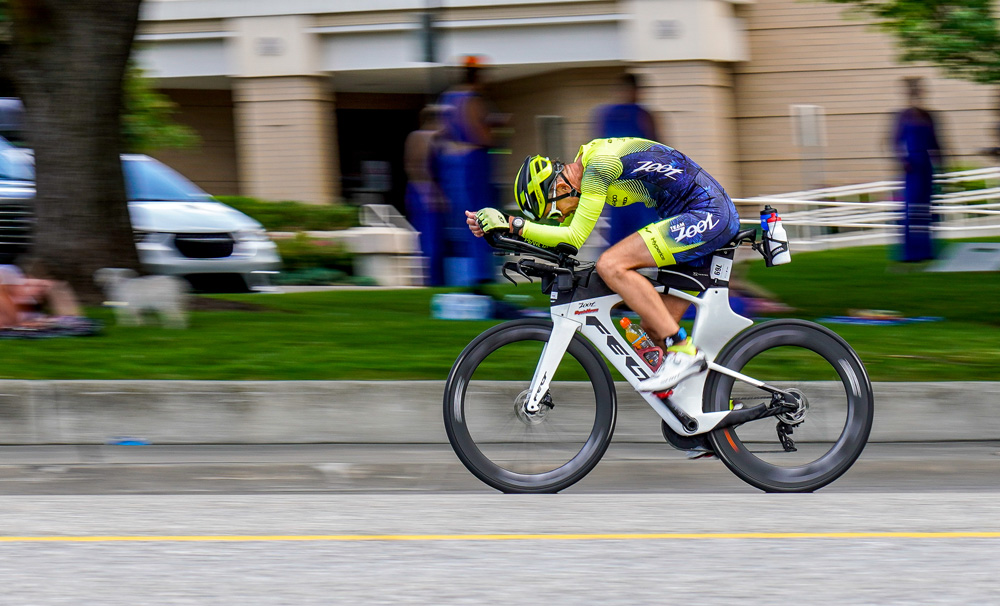
Motorcycles and bicycles go hand in hand. That is why more motorcycle manufacturers are crossing over into the pedal-pushing world these days, always trying to find a new niche.
I can’t think of a single friend who rides motorcycles who doesn’t pedal when they’re not twisting a throttle. Most are into mountain biking and/or road biking, and many are getting into gravel biking. I ride bicycles, too, but my preferred style of pedaling is a little different than theirs. My second hobby is triathlon, and cycling is a big part of triathlon. At least a third of it. That’s why you can often find me on one of those spacy-looking bikes with funny handlebars that traditional road bikers seem to loathe. I learned long ago not to get my feelings hurt when road bikers don’t wave back to us sleeveless heathens.

The Pierer Mobility Group, aka Pierer Mobility, is one of the motorcycle manufacturers crossing over into the cycling segment. Pierer Mobility recently acquired Felt Bicycles, which had close ties to the motorcycle industry back in the day. Felt Bicycles was founded in the early 1990s by Jim Felt, whom you might remember was a factory motocross tuner for several stars of the sport like John DeSoto, Jimmy Weinert, Broc Glover and Johnny O’Mara in the 1970s and ’80s. Felt’s bicycles were initially distributed by Answer Products before relaunching in the early 2000s as an independent company. It was purchased by the Rossignol Group in 2017 and then recently by Pierer Mobility. Felt makes several styles of bicycles, including triathlon (aka TT) bikes, and their triathlon bikes are regarded as some of the sport’s elites. One of the top triathletes in the world, multi-time Ironman World Champion Daniela Ryf, rides one. Her most recent win came in 2021 aboard a similar-looking version of the one we’re reviewing here. Triathlon legend Paula Newby-Fraser also helped Felt get off the ground in the 1990s.
With the acquisition of Felt Bicycles, Pierer Mobility suddenly has triathlon bikes on its hands, and to publicize this, they went looking for a “tri person” in the motorcycle industry to review its new toy. Luckily for them, especially me, they didn’t have to look far. Pierer Mobility’s media folks in Murrieta, California, know that triathlon is a hobby of mine and that I had recently completed my first full Ironman and was training for another one. Perfect!
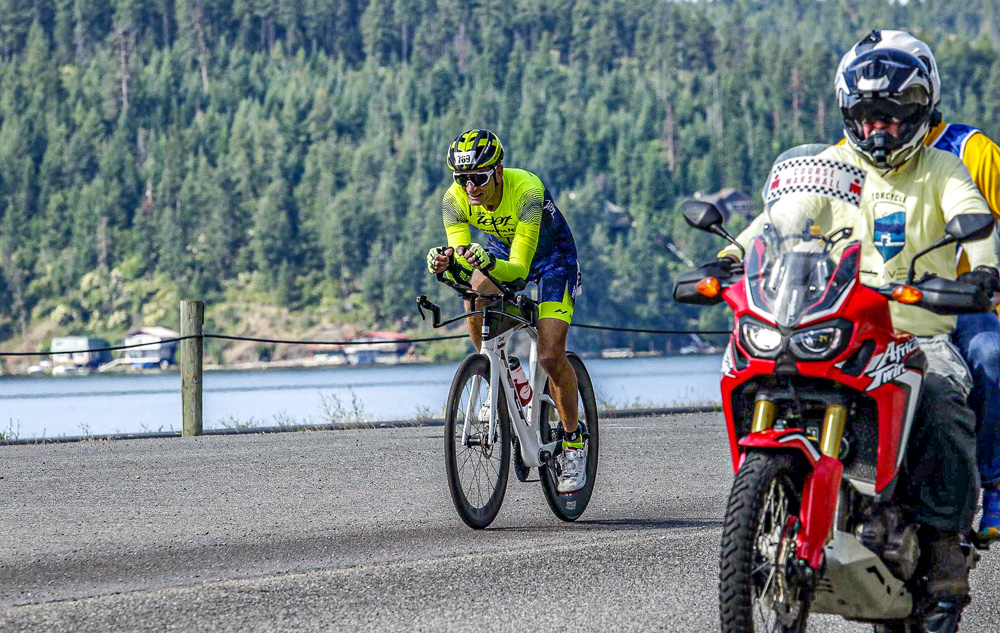
The Waiting
We began talking in October 2022 about having me review the new state-of-the-art, California-built Felt IA 2.0 tri bike. I liked the idea because it would surely be better than my 10-year-old but beloved Fuji D6 tri bike and would get me excited about training again. Anything different is always good when it comes to the seemingly endless training hours. Plus, I thought it would be cool to ride a Felt bicycle since I had known Mr. Felt from my early days as Cycle News’ motocross race reporter. Jim was always super cool to me at the races.
Unfortunately, my Felt bike wouldn’t be available until March 2023, and my race in Coeur d’Alene, Idaho, was in June, which isn’t a lot of time to get used to such a specialized bicycle for an endurance race like Ironman. March came and went but the bike finally arrived. My first ride on it was April 8, and it was an eye-opener.
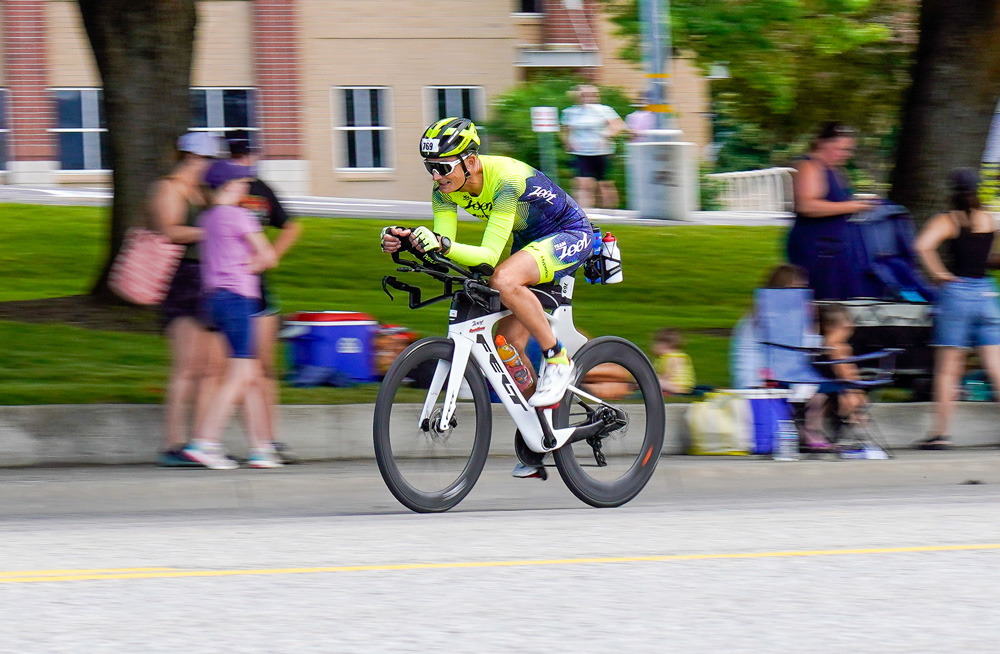
First Ride
TT bikes are very specialized. They are designed to do one thing and one thing only—to go fast! And I indeed could feel the speed difference between it and my faithful Fuji. I’m not a bicycle junkie by any means, but even I could tell this bike rips and while using less effort—more speed with less people-power, I’m in! I already like this bike.
Tri bikes aren’t known for their comfort, partly explaining why you don’t see many on the road. When it comes to TT bikes, speed takes precedence over comfort. Surprisingly, I found the Felt quite comfortable—for a tri bike, of course. The 56cm carbon-fiber frame I chose for my 6’1″ frame fit me right out of the box. I had the bike professionally fitted and, to my surprise, made only a few changes.
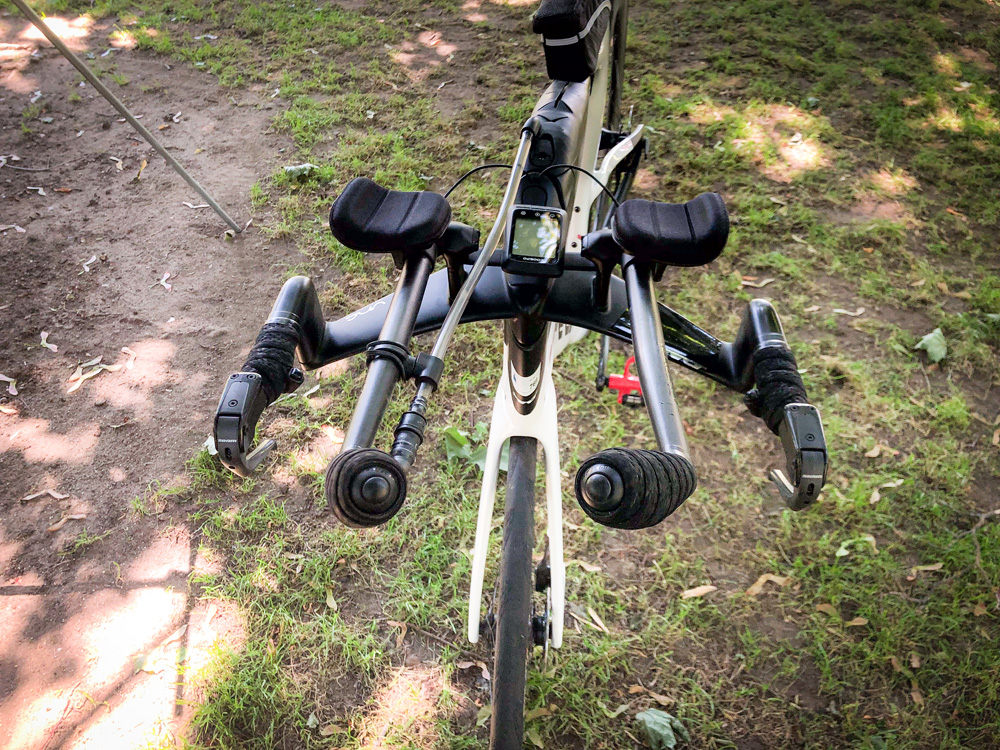
But all was not perfect. I struggled with the Felt’s aero bars. I couldn’t stay in the aero position for any length of time; the elbow rests and extensions were just too close together for me, which put a severe strain on my shoulders and wrists. This ultra-aero position might be fine for pros who are on the bike for about four hours but not for this age-grouper who’ll be on the bike for more than eight hours. I had to find more comfort. I did, but it took a while. I was getting worried because my race was only a few weeks away and I was still searching. I finally found a somewhat unorthodox arrangement that worked for me. I was finally confident that I could ride the bike for 112 miles comfortably before starting my 26.2-mile run. Getting off the bike feeling “fresh” before a 26-mile run is imperative.
The Felt has a slick built-in hydration system that holds 26 ounces and is easy to refill while on-the-go at the aid stations. It also has a built-in compartment for gels but can only hold a few, so I planned on taking advantage of the special needs stations along the race route for most of my nutrition. The bike also has a small compartment built into the frame that holds **just** enough tools to change an inner tube, which I chose to use rather than tubeless tires. Let the debate begin.
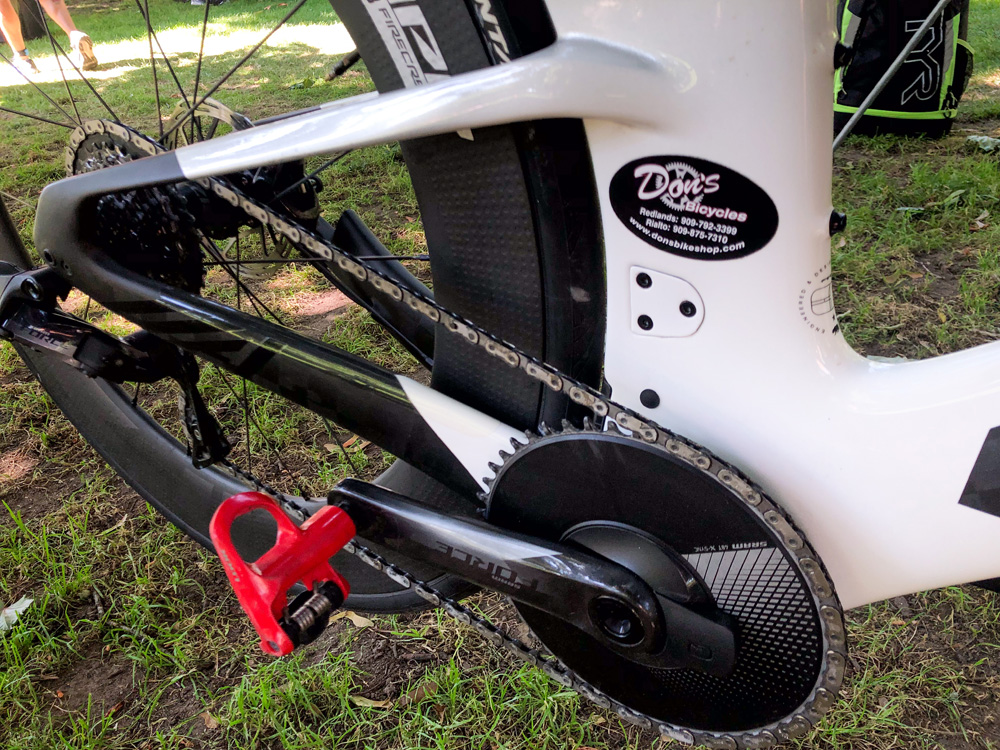
Race Day
Finally! Race day, and I was nervous. Not so much about the bike but the Coeur d’Alene bike course. I’d done it twice before in half Ironman races, which were brutal. The thought of doing it twice seemed flat-out impossible to me. It’s a hilly course with approximately 3000 feet of elevation gain—that’s a lot for a triathlon, and TT bikes aren’t great climbers, nor am I. Not an ideal combo, but the Felt and I, it turned out, got through it well. My goal was to finish the bike portion in under eight hours—mission accomplished with only one minute and 22 seconds to spare. I’m sure the speedy Felt made up that difference alone.
The Felt and I got to know each other quite well during the race and our many hours of training together. Several things stood out about the bike. The Felt’s electronic shifting is a godsend. It changes gears superbly and effortlessly, and the shifting buttons are positioned perfectly on the aero bars and on the drops, where you can operate the shifter buttons with just the palms of your hands. You use zero effort to change gears. The setup encourages you to shift so you’re always in the ideal gear, and that is a huge advantage for speed and for saving energy in endurance races.
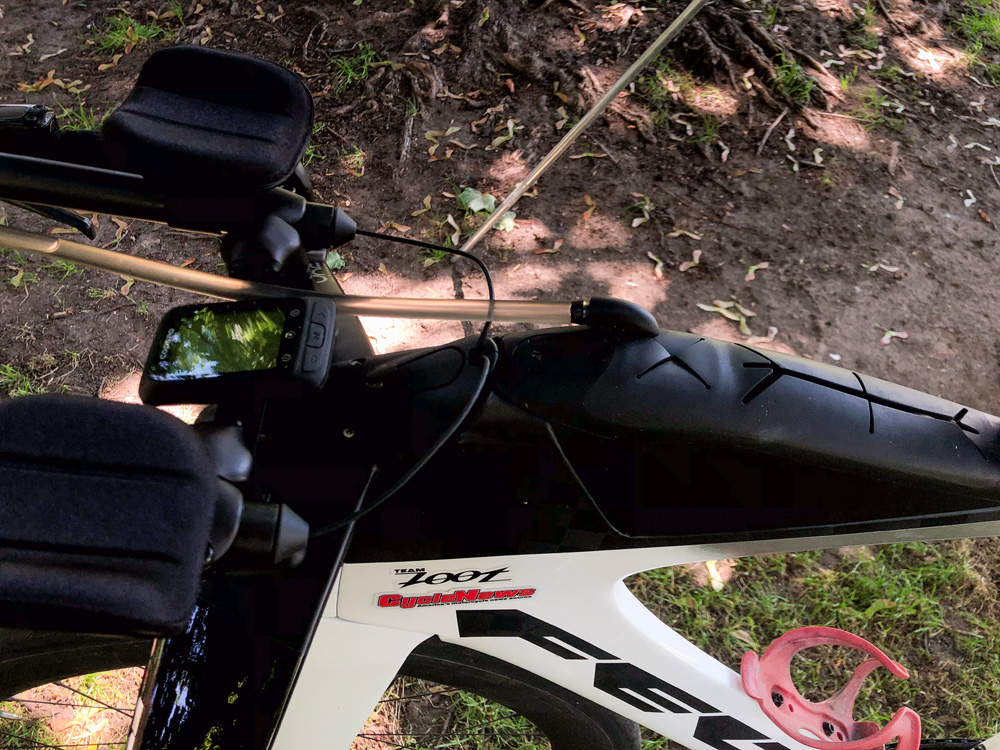
Also, I’ll never go back to dual front chain rings again after riding the Felt’s single sprocket setup. You never get lost with your gearing or worry about cross-chaining, and there are fewer mechanics involved (things to break) and a reduced chance of the chain derailing. Less stress. I still felt like I had plenty of gears on the Felt, and whenever I did feel a little in-between gears, it was never a big deal or lasted very long. The advantages far outweighed the disadvantages for me.
I had a love-hate relationship with the disc brakes. I liked that they were so strong and didn’t require much effort (there’s that word again, but in triathlon, reducing effort is a never-ending battle) to operate, but I didn’t like how grabby they were. They scared the crap out of me at times. Unplanned lock-ups on tri bikes aren’t good.
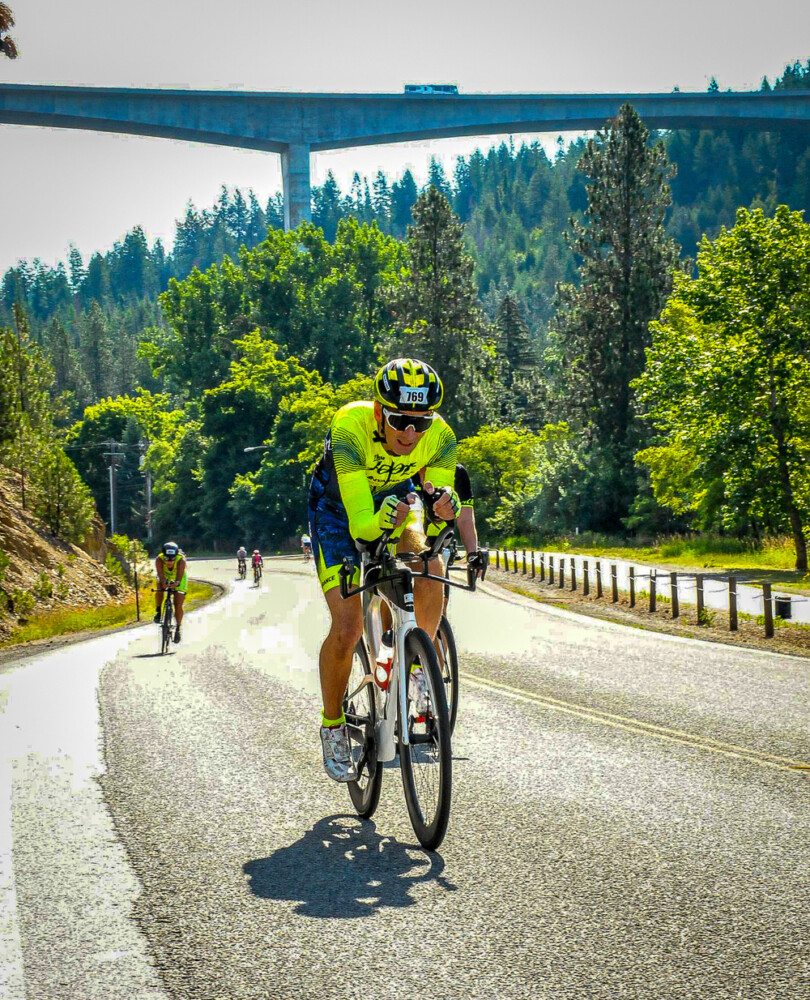
Tri bikes tend to be twitchy and handle ultra-quick, but I found the light-feeling Felt more stable than expected and not too scary in moderate crosswinds. And the seat was excellent; no issues whatsoever.
My bike came fitted with 404 front and 808 rear carbon-fiber Zipp rims that rolled well and didn’t seem overly fazed by the wind. The Felt also uses larger 28mm (Continental) tires, which improve handling and allow the use of lower tire pressure, which I prefer for better traction and a less-jolty ride.
The bike performed flawlessly in the race. Luckily, no flats, either. If I did get one, though, I was prepared, having practiced tube changes several times at home. I admit, I missed not having the quick-release axle skewers that most bikes have, but with a pro-level bike like the Felt IA 2.0, that’s one of the small prices you pay for ultra-aero and going fast.
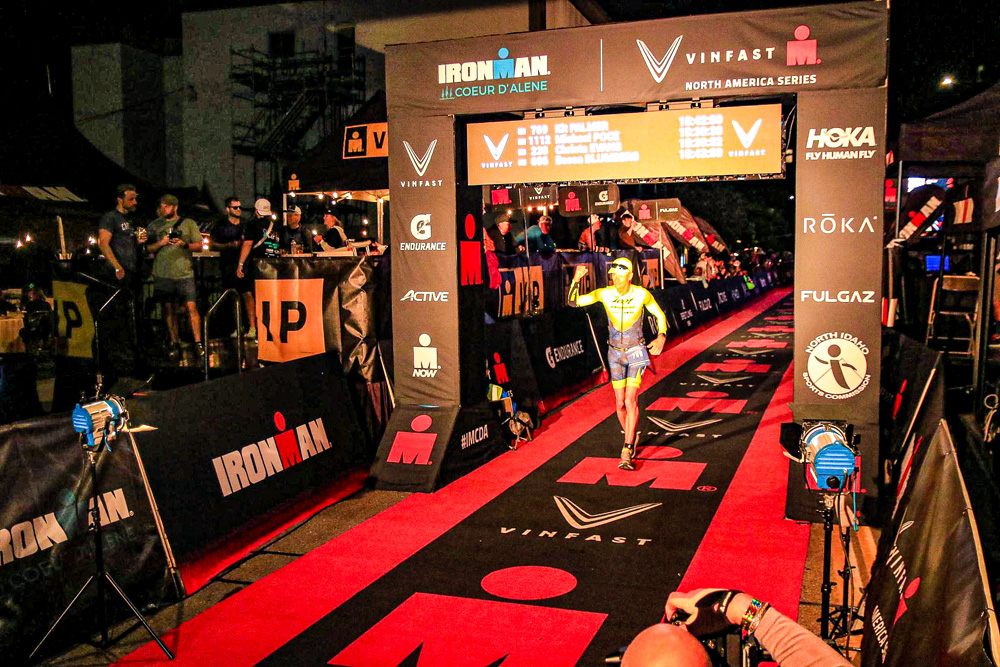
Made It
I crossed the Ironman Coeur d’Alene finish line at 15:42:00. Not great, but eh, I finished. And, to be honest, going in, I was worried about finishing this one, mainly because of the hilly bike course. In case you’re unfamiliar with an Ironman race, it is a 2.4-mile swim, a 112-mile bike, and a full 26.2-mile marathon run with no breaks in between and a 17-hour limit. I honestly thought it was a bit of a gamble attempting such a race on an unfamiliar F1-type bicycle with “little” training time on it, but the Felt was remarkably easy to ride, performed flawlessly and made my life as easy as possible in a not-so-easy race. CN
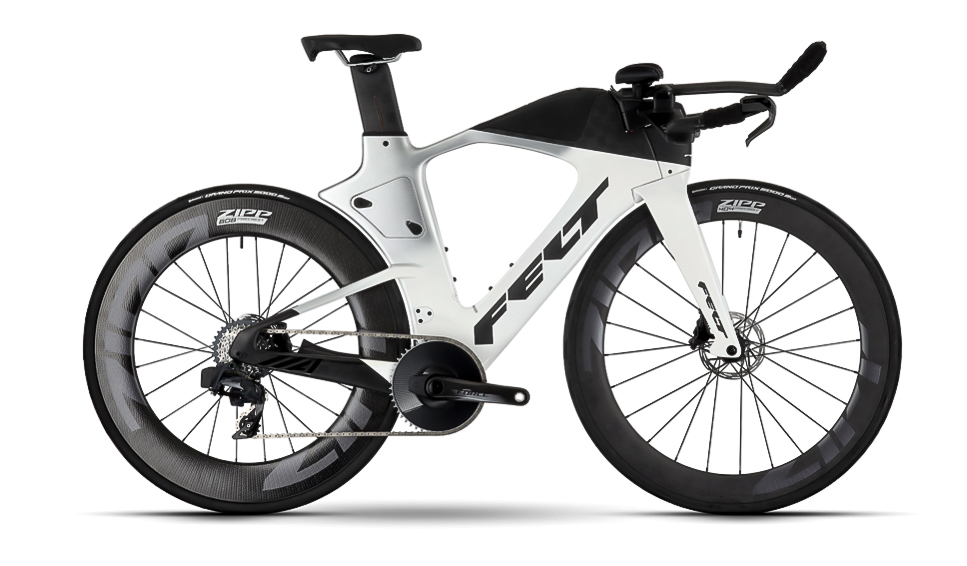
Felt IA FRD 2.0 Ultimate Force eTap AXS Specifications
| MSRP: | $13,999 |
| Aero Basebar: | Felt Dagger Direct 2.0 ASC / Devox Ergomod Extensions |
| Cassette: | SRAM XG1270 12-speed 10-33T |
| Chain: | SRAM Force 12-speed |
| Bar End Shifters: | SRAM S-900 AERO HRD, Hydraulic Disc, Flat Mount |
| Tires: | Continental Grand Prix 5000 700×25 |
| Wheel – Front: | ZIPP 404 Firecrest Disc / Tubeless Ready / 12x100mm |
| Wheel – Rear: | ZIPP 808 Firecrest Disc / Tubeless Ready / 12x142mm |
| Frame Material: | Felt IA 2.0 – integrated Aero / UHC Ultimate+ TeXtreme Carbon Fiber |
| Fork: | Felt IA 2.0 – integrated Aero-Dagger / UHC Ultimate+ TeXtreme Carbon Fiber |
| Headset: | IS (IS-2) |
| Seatpost: | Felt Aero TRI IL 2.0 VM / UHC Advanced+ TeXtreme Carbon Fiber |
| Front Derailleur: | None |
| Rear Derailleur: | SRAM Force eTap AXS, 12-S |
| Crankset: | SRAM Force 1 DUB w/Power Meter 48T |
| Bottom Bracket: | CeramicSpeed BSA for SRAM DUB |
| Brake Calipers: | SRAM S-900 AERO HRD, 2-piston, Hydraulic disc brake |
| Stem: | Felt Dagger Direct 2.0 ASC / Devox Ergomod Extensions |
| Aero Clip-On Bar: | Felt Dagger Direct 2.0 ASC / Devox Ergomod Extensions |
| Saddle: | ISM PS 1.0 Satin Steel |

Click here to read the Felt Triathlon Bicycle Review in the Cycle News Digital Edition Magazine.
